A common email or phone call I get starts off like this, “Hey Gene, I’m a really skilled mountain biker, I don’t need your whole curriculum, I just need to learn how to do bigger drops and hit jumps better.” Since this is a common question I will give you a detailed answer so you can got out and hit those big drops and jump better!
DISCLAIMER: Drops and jumps on your mountain bike can be dangerous, make sure you are wearing the appropriate safety gear and have the basic skills I mention below wired before practicing them. Always practice with a friend in case you do get hurt!
Drops and jumps on your mountain bike are not really hard so I have to ask this question to those emailing me claiming to be experts but simply can’t do drops: “If you are a really skilled rider, why can’t you hit big drops and jump better?” “I mean, isn’t that what skilled riders do? Could it be that you are not as skilled as you think you are?”
Maybe your ego is getting in your way? I mean you basically said, “I can ride really easy trails well, but I struggle with more difficult trails” but at the same time you called yourself a skilled rider. I’m confused. Seriously, not trying to be a jerk, just being realistic.
Maybe you feel drops and jumps are separate skills from “riding skills” as most/all of the trails you ride don’t have jumps or bigger drops. You may be saying, “Gene how can I become good at drops and jumps if I never encounter them on the trail?” The simple answer is to become a better rider – on the ground.
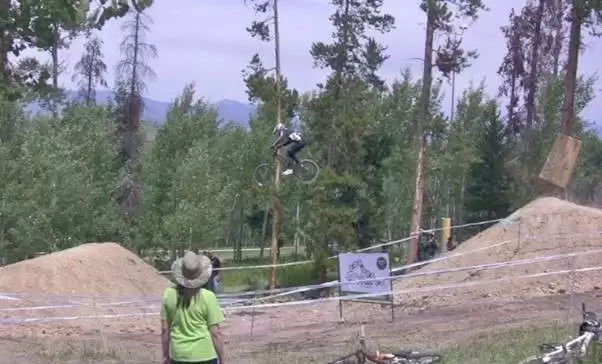
Gene Hamilton hitting the 48-foot gap jump at Sol Vista, 2009
US Mountain Bike National Championships
So, how does a 54-year-old rider like me (who doesn’t have near the “nerve” he used to have) hit 10-30 foot drops and 48-foot gap jumps? Through coaching and lots of deliberate practice. I am very good at the basic skills of body position and vision, not near the most skilled rider in the world, but good enough at the basics to hit this 48 foot gap when I was 43 (and I still hit jumps that big at 54). Not saying that to impress you, but to impress upon you the value of core skills. It doesn’t take “balls” to do a jump like this, it takes confidence in your core, basic skills.
I teach how to do drops and jumps in my courses without doing them (we do small drops). This often leads to this question, “How can you teach me to jump with no jump?”. Which I fully understand. It would seem at first thought that, “you need a jump to teach someone to jump. Duh!” On further thought, you might realize that it is like teaching someone Karate while they are fighting!
Remember “wax on, wax off”? You first need to not only understand the basic skills required to do a drop or jump but also be really good at doing them!
Drops and jumps are actually pretty easy, you just ride off them, in balance and in control. This is something any “skilled rider” can do! The 15-25 foot drop below is no harder than going off a curb correctly. It was a lot scarier as the penalty for failure is pretty massive, but it really didn’t take much skill. Here is how to do a big drop like “Mushroom Rock”.
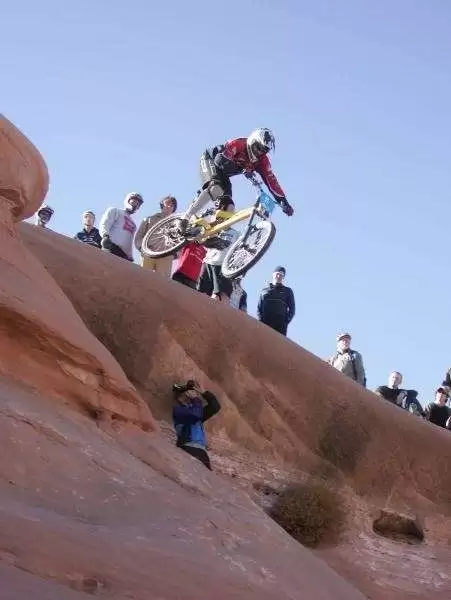
MTB Coach, Gene Hamilton dropping Mushroom Rock.
First learn to ride in control, in balance, and in a neutral position while looking ahead 100% of the time. Get so good at it that you do this all the time, even on the steepest, scariest mountain bike trail. Drills are the best way to do this.
See this video tutorial on body position for help with being in balance, in control, and in a neutral position:
This is something any “skilled rider” should already be doing, but if you go to a place like Whistler you will realize that 50-75% of the riders are not doing this.
Those riders are easy to spot as they just look a little off-balance, they aren’t smooth, they are stiff, their heads are moving a lot (the head of a rider in balance and in a neutral position almost never moves), herky-jerky is an excellent description of the majority of mountain bikers.
If your view keeps changing, your head is moving or you are getting “eyeball jiggle” you are not in balance nor in control.
Once you can ride in balance and in control, baby step your way up by using the drop techniques I teach on smaller drops (such as a curb) and working your way up to bigger drops.
As a matter of fact, they are barely techniques, I teach them on the first day of my skills progression and 8 to 78-year-old students have an excellent grasp of them by the third day.
What are these techniques? Well, at speeds, above 12-15 miles an hour you simply ride off the drop in balance with all your weight on your pedals. Going below 12 miles an hour you will have to do a little baby manual or coaster wheelie off the edge of the drop. I say “little” because you aren’t actually trying to lift the front wheel, your goal is to simply keep the front from dropping quickly.
On drops with a flat landing, your goal is to decrease the angle of incident that you hit the ground at. This way you land in a centered, neutral position looking ahead, ready for the next thing the trail throws at you. Landing slightly front-wheel-first or with both wheels landing at the same time is best.
Once you are consistently landing both wheels at the same time, in balance, in control while looking ahead off a curb, find small drops with a steep downhill landing. You can often find these in the local elementary school playground or at a bike park if you are fortunate enough to have one nearby. This way you get used to landing on a “transition” which will ease you back to earth with much less jarring than a flat landing.
A big focus should be looking past the landing! Most crashes on drops don’t actually happen on the drop, they happen AFTER the drop. On a drop with a downhill landing, you are going to be going much faster when you land than when you take off. Knowing what the trail looks like after the drop and looking where you want to go AFTER the drop (not at your landing) is very important. Also, as you work your way to bigger drops that will have a blind landing (where you can’t see the landing before you take off) make sure you thoroughly inspect the landing and make a plan of where you want to go after the landing before you do the drop!
Jumps are pretty similar, at least the jumps you will be learning on. Steep “dirt jumps” are not the best place to learn. Find tabletop jumps (no gap to clear) without steep take-offs to practice on. Once you have found a safe* jump to practice on, set your bike up for jumping by stiffening your suspension a bit and slowing the rebound so it doesn’t “buck” you on the takeoff or landing. Then simply ride off that jump slowly in balance, in control, and in a neutral position.
*“Safe” is a tricky word as any jump can be dangerous. Wear your helmet and safety gear.
Pretend there is a clear piece of plexiglass under you and you aren’t actually leaving the ground, just riding over an arc. Focus on how you would stay centered and neutral as you ride over that arc and look past the landing (to where you want to go) once you take off. Once you are comfortable, slowly increase your speed until you are landing both wheels at the same time or slightly front wheel first on the “backside”.
That is really all there is to it but many people get hurt jumping as they aren’t doing those seemingly simple skills. Mountain bikers get hurt jumping when they ride off-balance, ride off the back of their bike, try to do something as they leave the jump (like yank up on the bars or pedals), ride stiff and let their suspension buck them, aren’t looking towards where they should be and don’t “baby-step” their way up to bigger jumps. There are advanced jumping skills that I didn’t mention because you need to master these basic skills first!
Hitting bigger drops and jumps on your mountain bike isn’t hard, you just need to have a few core skills wired and baby step your way up to bigger drops as you feel comfortable. Jumping is a little more dangerous, but if you find the right tabletop jump and start slow, you’ll figure it out.
Please share this article with anyone you think may benefit and feel free to call or e-mail with any questions.
Thanks and create your best ride yet,
Gene

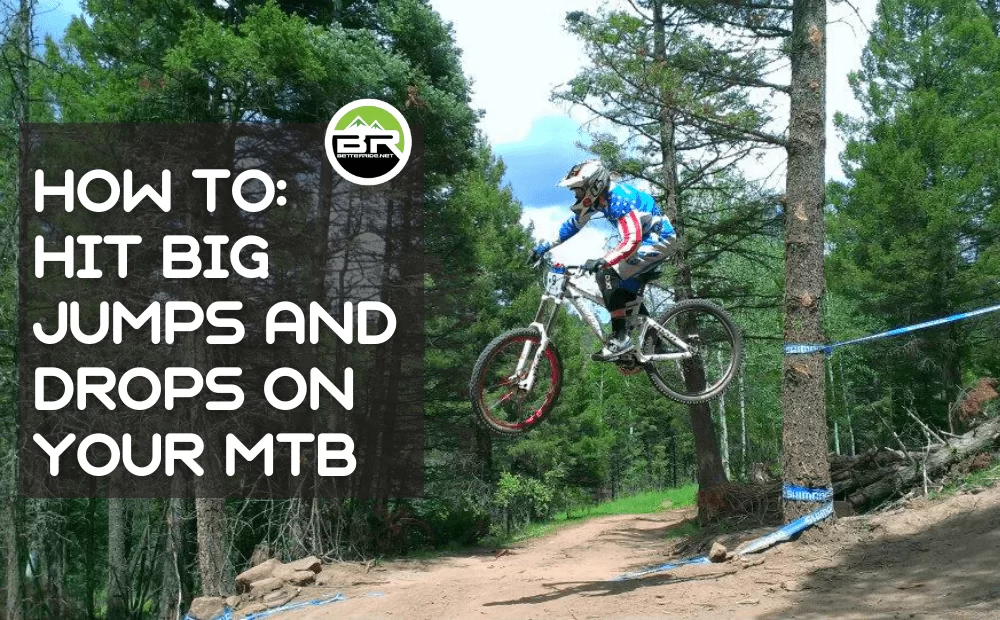
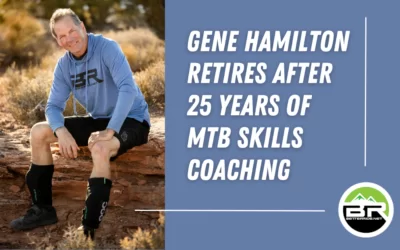
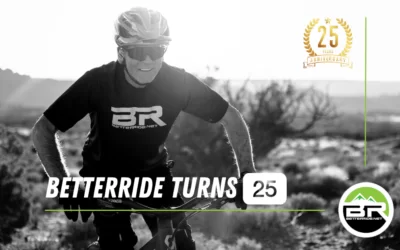
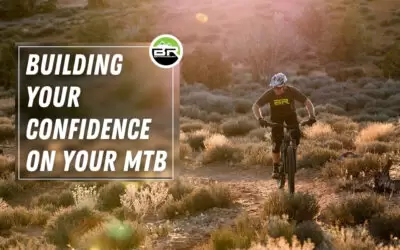
Thank you for adding ” at any age” in your title. I am 63 years old ( one of your former students) and I love cleaning big drops and gaps. Nothing feels better than a clean landing on big jump. I started small and worked my way up. It`s like I have heard you say ” Perfect practice makes perfect”.
Right on Andy! You are an inspiration! Love to hear that you are hitting big jumps at 63 and that my course helped you get there. Keep up the practice and fun riding! And send us a photo or two!
Cheers,
Gene
I have always avoided jumps. Mostly, because I keep seeing people going over the bars. It looks like that as soon as they take off (usually small jumps), their front wheel dives down and game over. I did take a class with Dylan and it was great sometime ago. But, it was a basic course not about jumps.
Hi Douglas,
Small jumps can be the sketchiest because your front wheel is in the air before the rear wheel is even on the jump! A jump with a take off a bit longer than your bike can be safer as both wheels on the same plane as your front wheel leaves the jump.
Cheers,
Gene
very good article! i was goin for the jumps, i now know(again) i have to train my basic skills more first! thanks!
i still hope to progress enough to have the skill and confident for some jumping and bigger drops than i do now, at 55, but we will see.
thanks for the riminder!:)
Thanks, Johan. Definitely work on your core skills before jumping!
Create your best ride yet,
Gene
Gene
I normally love your articles. This I found a little off. First, I think that not having jumps and drops to practice on is a real thing. 2nd, I feel that you way over-simplified how to ride a jump (almost to the point of being dangerous). “Just ride it like you ride a trail?” Your article made it sound like if you can’t ride jumps or drops you suck, and if only you had better bike position you’d be nailing 40 ft gaps. It all felt a bit cursory and off the cuff. Very reminiscent of the “Just roll it” philosophy.
Hi Doug,
I just re-read my article and I can’t find where you got this quote: “Just ride it like you ride a trail?” I never said that. I said Drops and jumps are actually pretty easy, you just ride off them, in balance and in control, then I went into more detail. You left off the in balance and in control part and the entire rest of the article where I explain what I mean by in balance and in control.
Such as this sentence, First learn to ride in control, in balance, and in a neutral position while looking ahead 100% of the time. Followed by a link to my video on how to ride in control, in balance, and in a neutral position. As I mentioned in the article, at least 50% of the riders at a place like Whistler are NOT riding in balance and in control.
I also explain to use a tabletop jump without a steep take-off and to go slowly at first. Then I explain more details such as Baby stepping your way up.
This was a LONG and detailed article. I never said, nor made it sound like “if you can’t ride jumps or drops you suck”, you read that into my article. I did imply that if you can’t hit drops and jumps you aren’t an expert, saying someone is not an expert is WAY different than saying they suck.
I don’t think I have ever used the word suck regarding mountain bikers. I have great respect for anyone who throws a leg over a mountain bike and chooses to ride it. We all had to start somewhere and for me, it took over 10 years to learn how to and be able to look ahead most of the time and ride in balance and in control. This is why I started BetterRide, with the proper instruction and a diligent student that 10-year learning curve can be reduced to a matter of months.
Create your best ride yet,
Gene
If simple is the new smart, this is one of the smartest articles that I had ever read about jumps and drops. Great coaching!
Thanks, John!
Hi Gene, I’ve read way too many articles, and watched way too many videos on jumps & drops. The end result of course is confusion, which manifests itself as truly ugly sequences of compressing/yanking/unweighting as I approach features, then sail over them like a stiff-limbed, bewildered robot, just waiting to be bucked over the bars. Your article, however, is completely different. It’s the first one that makes sense to me, and has enabled me to really progress. Please keep doing what you’re doing. Thanks, and respect!
Hi Chris, sailing like a stiff-limbed, bewildered robot isn’t fun! Glad my article makes sense and has enabled you to progress! You are welcome and there is a lot more coming! Check out my youtube channel, https://youtu.be/Zu2T7ATIbvE for some video tutorials and more tips. You are welcome, I love helping others improve!